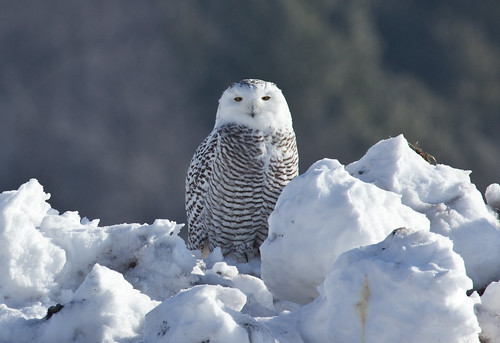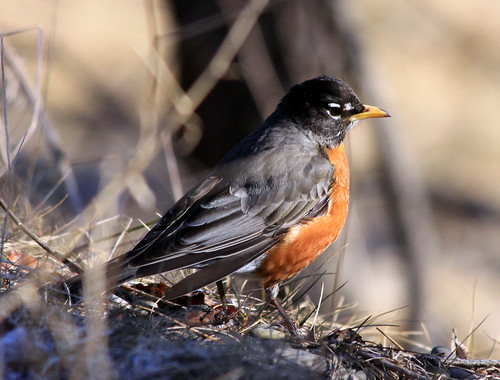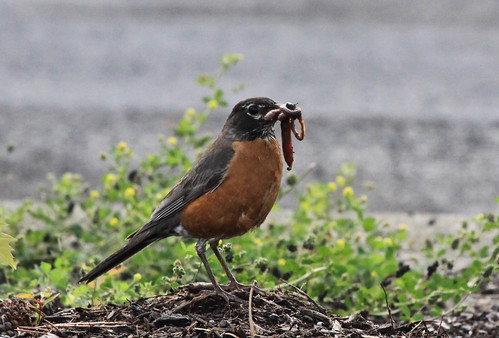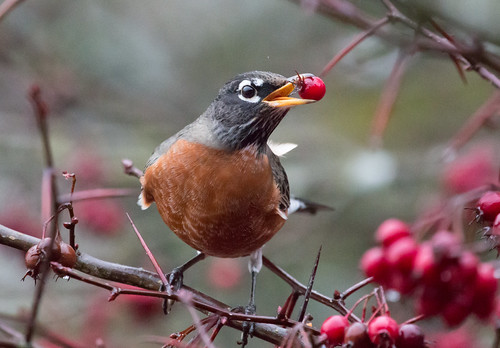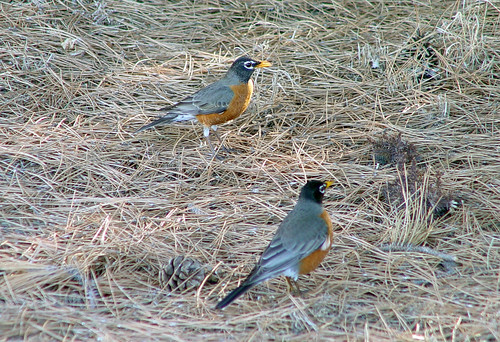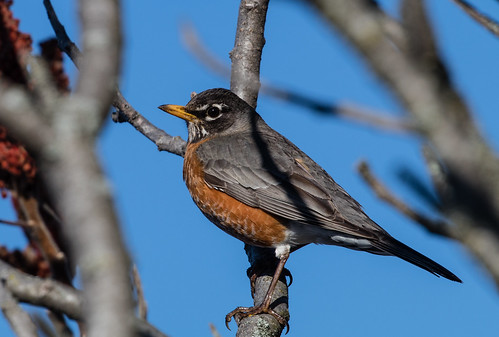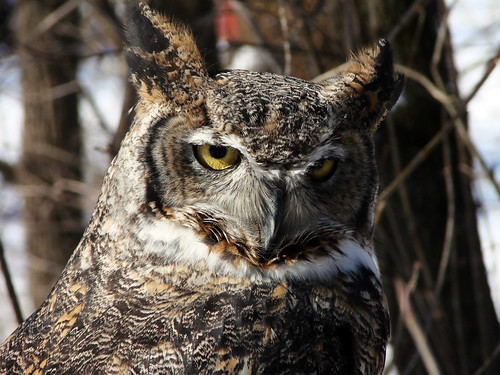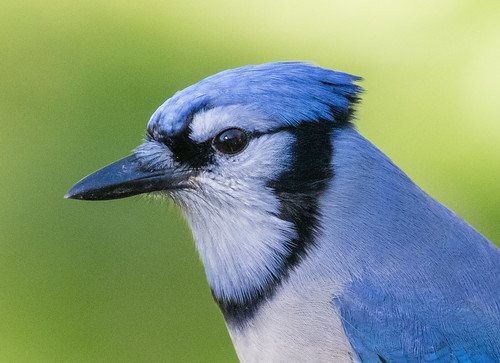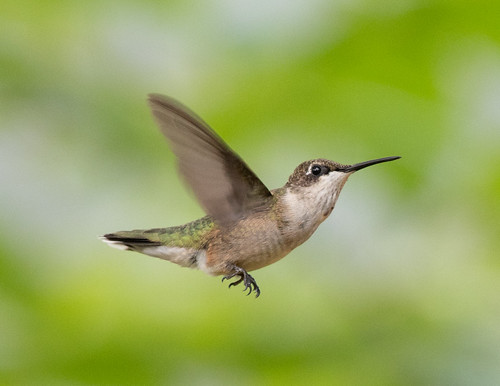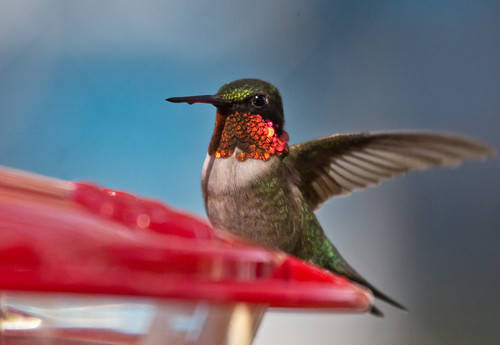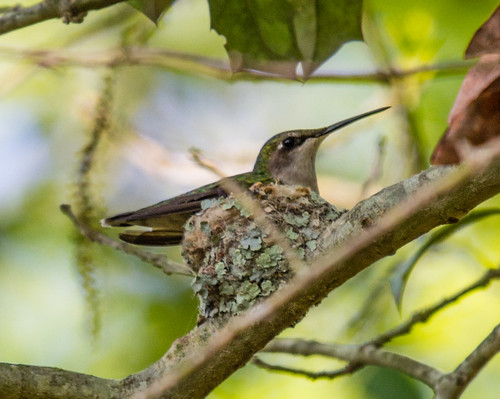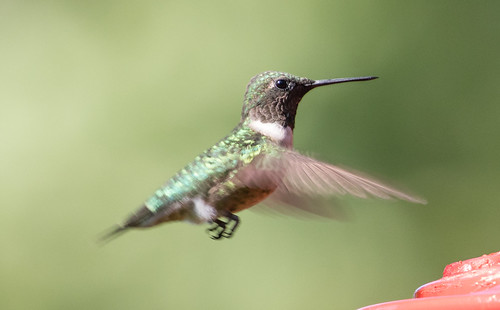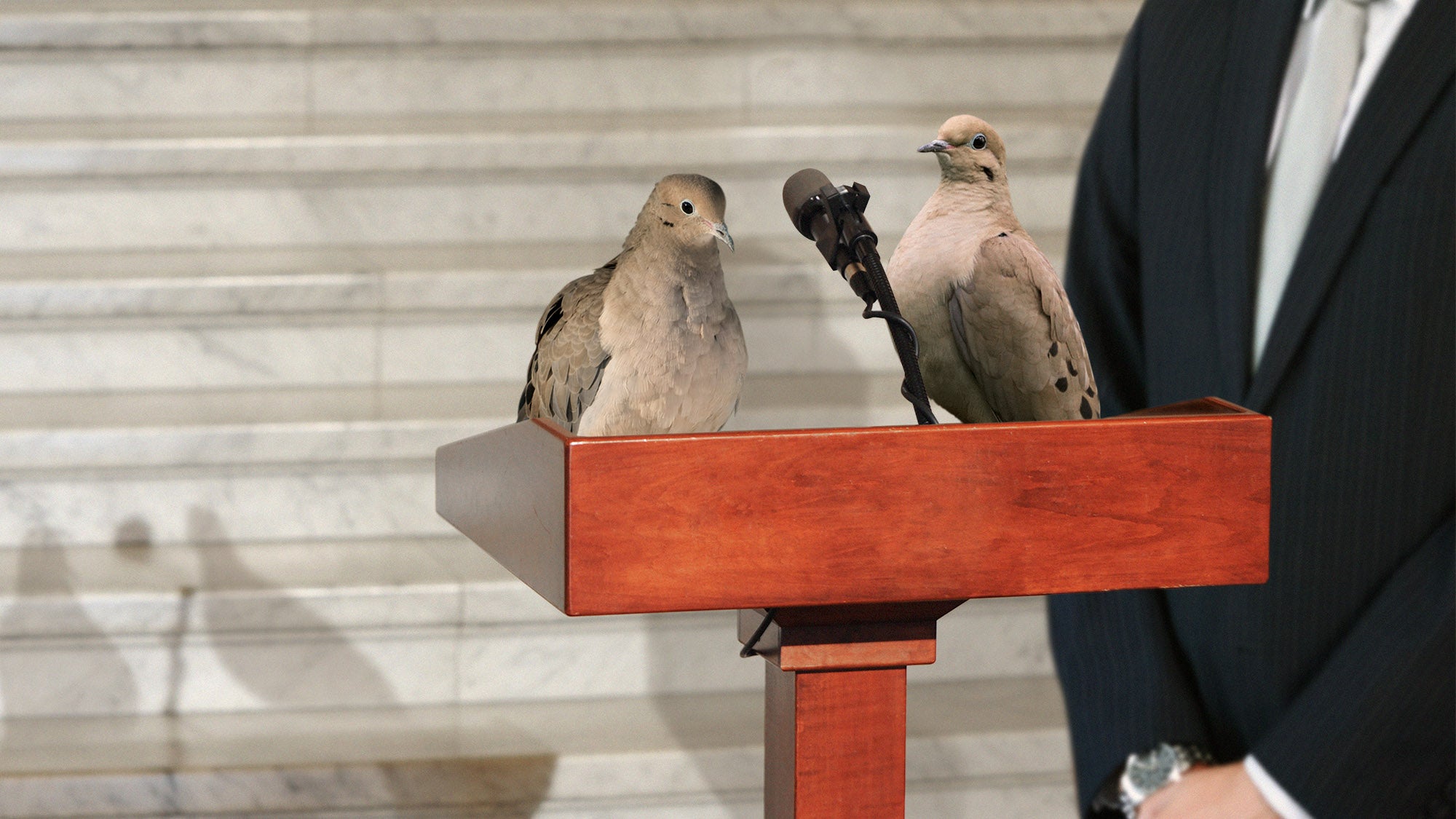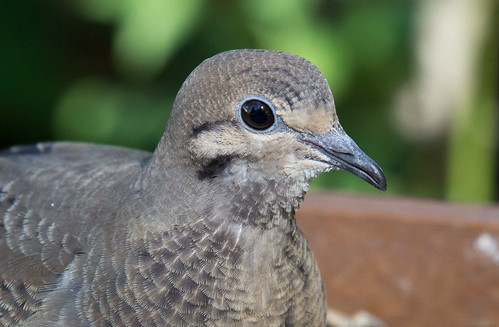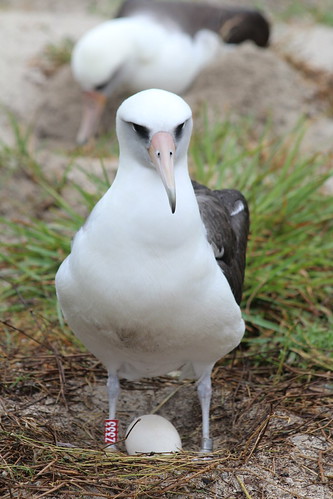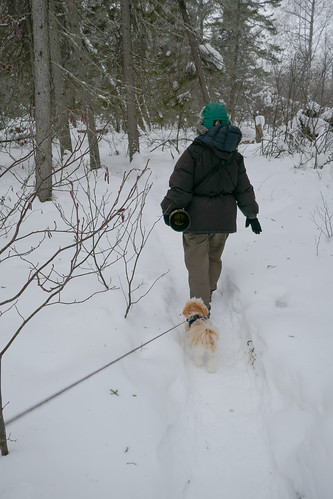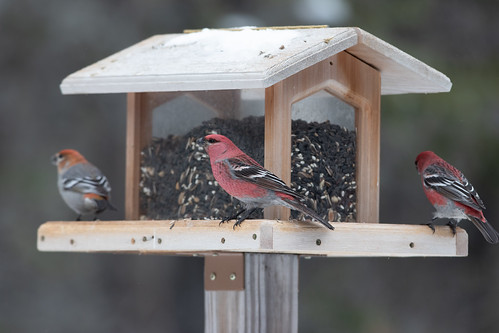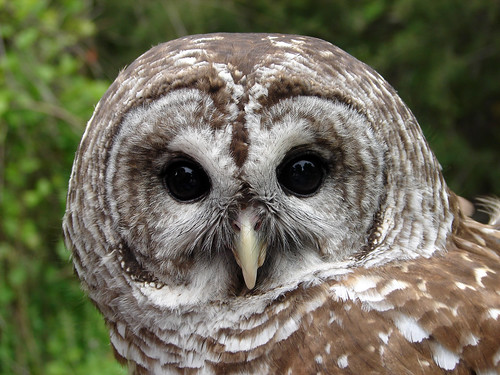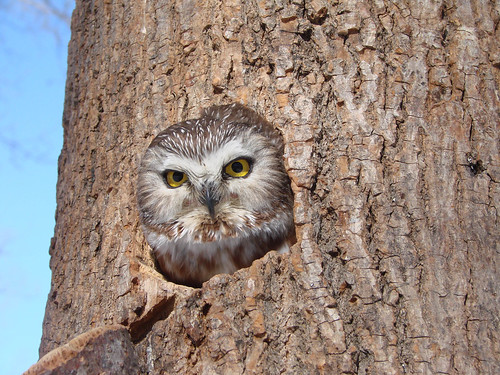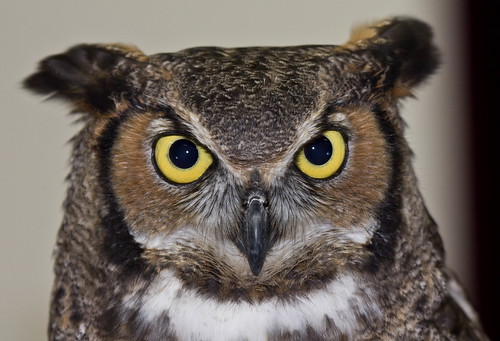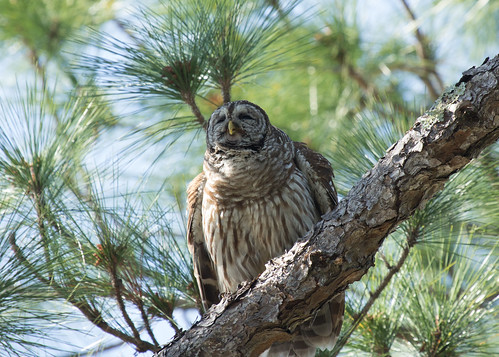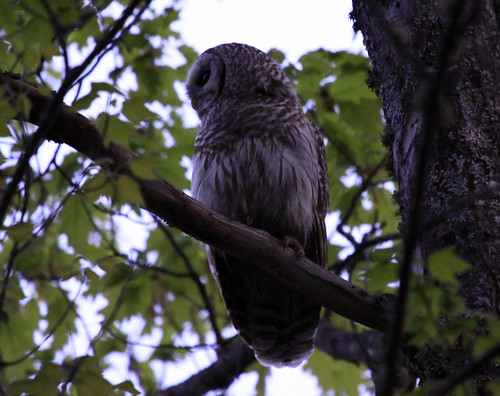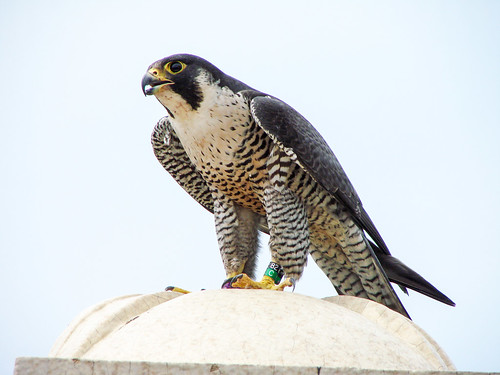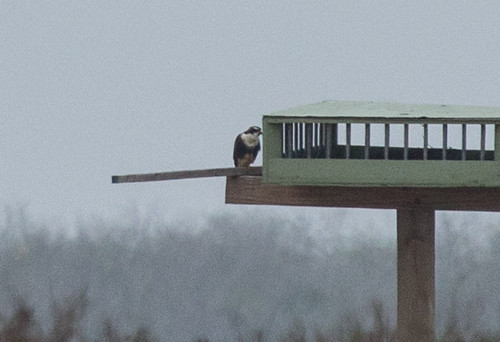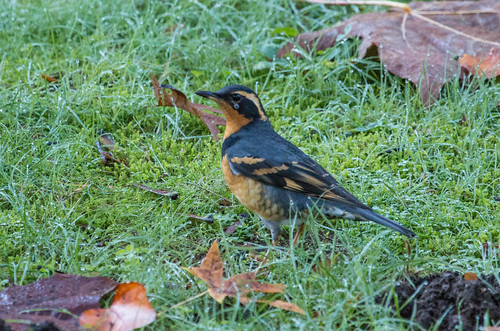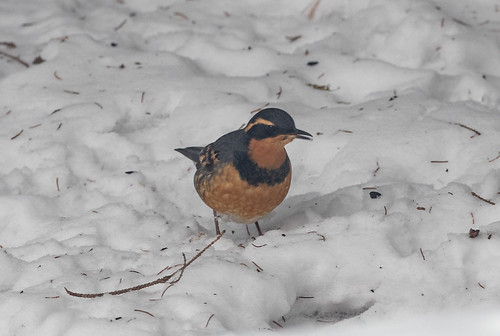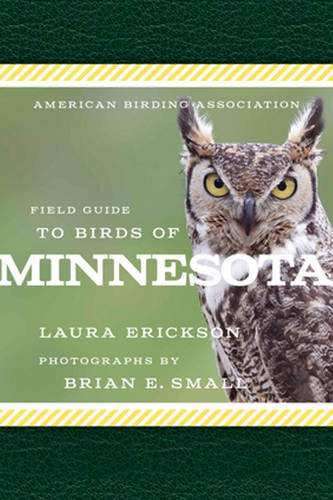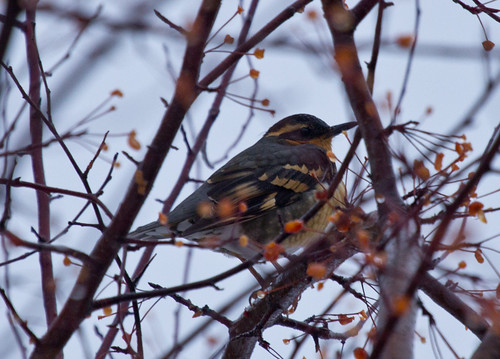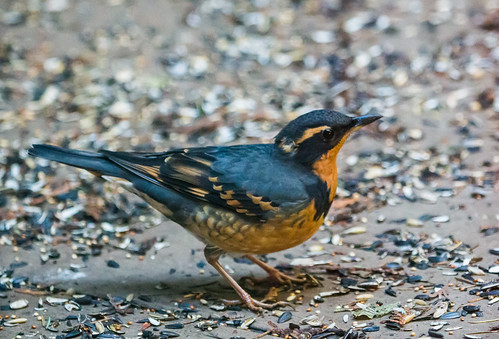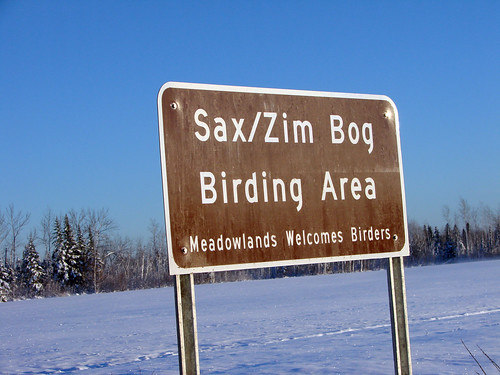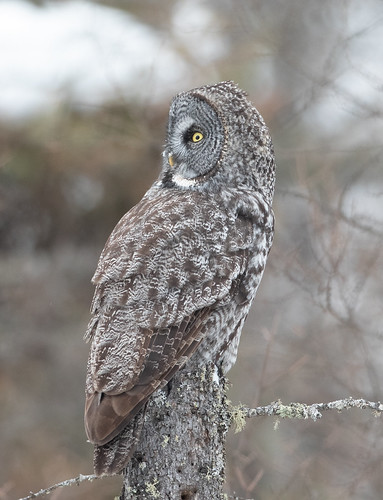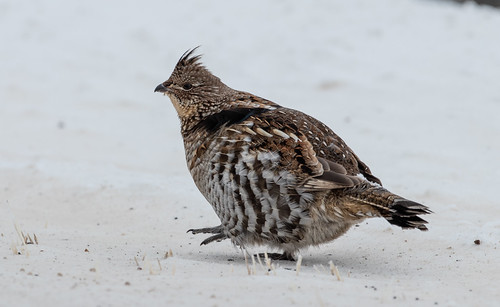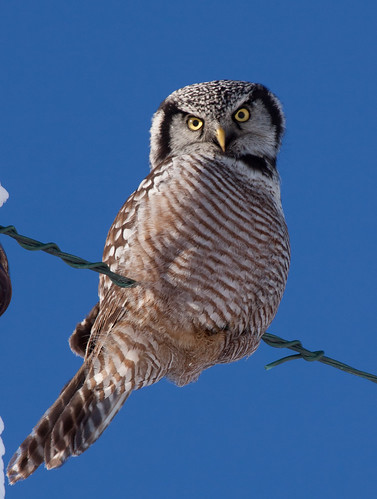Northern Minnesota has many wonderful attractions, but perhaps the most well-known, at least among birding circles, is the Sax-Zim Bog, especially in winter, and most especially in February. This has been rather a lackluster year, with no irruptions, but it was still an easy matter for Russ and me to see four different owl species on a half-day trip to the bog this weekend.

We of course can see owls every month of the year, but they are most conspicuous in February, the month providing some of the coldest weather Minnesota can offer. Our coldest day ever, when it hit 60 below zero in Tower, fell on February 2, 1996. Of the top ten coldest temperatures ever recorded in Minnesota, each one at least 52 below zero, one fell in December, three in January, and six in February. As more and more birds grow food stressed, owls that usually stay well hidden in the forest start hunting more out in the open. The hardest to find, the Boreal Owl, is especially more likely to be seen in February than any other month.
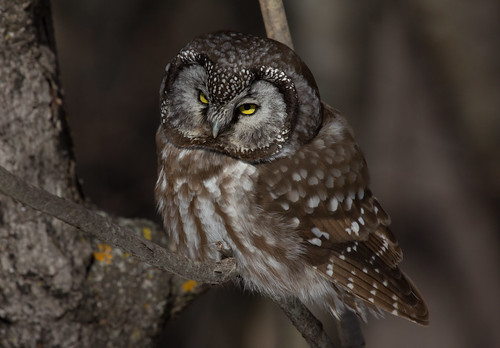 |
| This photo was taken in Two Harbors, but the last Boreal Owl I saw was in the Bog. |
A decade and a half ago, when we had our major Great Gray Owl invasion, I went out with three women from Atlanta, Georgia, on two different days, one to the bog, the other up toward Finland and Ely. It was so cold on one of those mornings that even inside my car, a crust of ice formed on our coffee. I’m sure those women never forgot the cold, but they also never forgot the owls we saw—Great Gray, Northern Hawk, and Boreal—along with a bunch of other northern specialties like Boreal Chickadee and Black-backed Woodpecker.
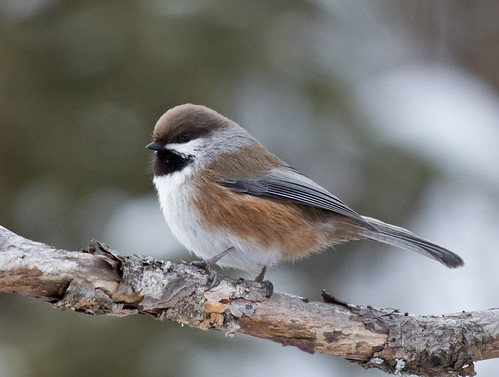

Traveling to a birding destination for just a few days in hopes of specific birds is always a crapshoot—you really never know if you’re going to luck into seeing any of your most wanted species. For some birders, the fun is trying to see all their birds on their own; others prefer to augment their chances by hiring a birding guide. And in a remote area like the bog in winter, where cell phone service can be spotty, some of the good birding is many miles from the nearest town or gas station, and ice and snow can make roads treacherous, a good guide can provide serious peace of mind. Most of the local guides up here form a tight-knit group that share with one another their best sightings, giving clients of all of them a definite leg up on maximizing their species count.
 |
| John Richardson gets the Pip Seal of Approval as a wonderful guide. His website is skylarkguiding.com |
For those who feel comfortable driving around on their own up here, there are a few ways you can increase your chances of seeing your target birds. Before heading out, go to the website
eBird.org, and click on Explore. You can look up where individual species you’re hoping to see have been spotted in recent days, or look up specific locations you’re planning to visit. (Here's an
eBird listing of recent sightings at the bog. My own sightings aren't listed, because I make my own checklists specific to individual locations within the bog.)
Whether you hire a guide or not, check out the Friends of the Sax-Zim Bog website at
http://saxzim.org/birding-the-bog/ You can download a map, get information about birding in the bog and logistical help, including a current map with the best spots marked, and more.
If you go to the bog on your own, make sure to stop at the Friends of the Sax-Zim Bog Welcome Center—if you didn't download a map ahead of time, you can get one there, and volunteers keeping track of sightings can tell you what birds have been seen and where. I knew
exactly where to look to find the Barred, Northern Hawk, and Snowy Owls last Sunday thanks to the people at the Welcome Center.
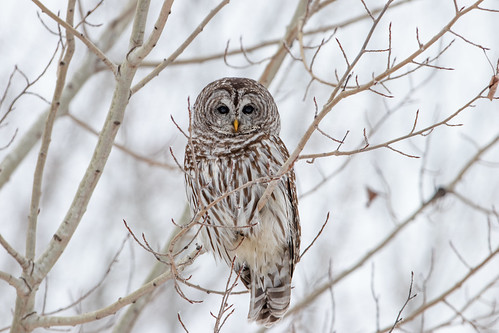
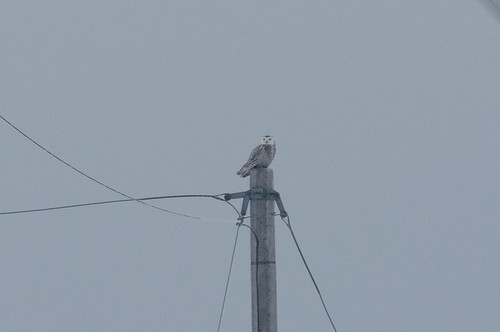 |
| This Snowy Owl was on a power pole exactly where it was supposed to be. |
They also told me within a half mile where to look for the Great Gray Owl—sure enough, there it was.
The most important thing to do in order to be safe and see birds is to pay attention while you’re driving. Roosting owls can be tucked in trees, very hard to see if someone in the car isn’t scanning.
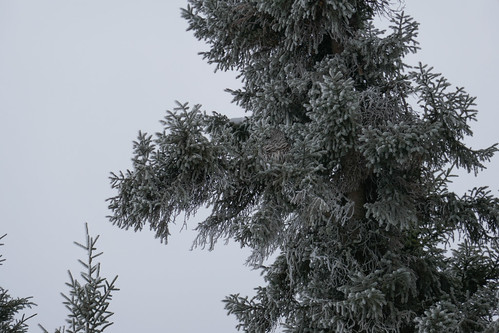 |
| This Barred Owl would be easy to miss without close scanning, or noticing a group of birders looking up. |
 |
| Once you know where it is, you can't miss! |
But also scan the road ahead—what may look like clumps of dirty snow may actually be interesting birds or mammals. Sunday, we’d have missed or gotten poorer looks at a Ruffed Grouse and White-winged Crossbills if we didn’t immediately slow down when we saw clumps ahead.
If you’re not paying attention, you risk scaring birds off before you’re close enough to identify them, or even killing them. I’ve heard from too many heartbroken birders who killed a Great Gray that flew in from the side without them noticing until it was too late.
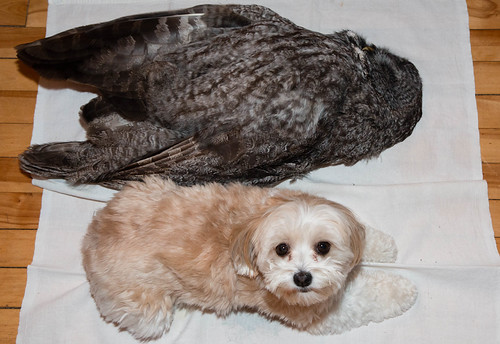 |
| My friend Erik Bruhnke found this poor dead Great Gray Owl on the side of a road last year and brought the carcass to a non-profit for use as an educational specimen. My dog Pip is there to show the size difference and to remind readers how important it is to slow down. (On the day I took this photo, Pip weighed exactly 9 pounds, and the owl, who was not the least bit emaciated--it died of trauma--weighed 3 pounds.) |
Always go slow enough to take in all in, while also keeping an eye on your rearview mirror so you can pull off if someone comes up behind. People who live in the bog don’t appreciate being late for work or a doctor’s appointment because birders slowed them down. However, when you do pull over,
be careful! The graders used to clear country roads often smooth the snow well beyond the road itself. What looks like a nice, wide shoulder may actually be a deep ditch. It’s a lot to deal with, which is why a lot of people prefer to pay a guide so they don’t have to drive at all.
The single most important thing to look for, besides actual birds, is birders. It’s shockingly easy, even for experienced owlers, to miss an owl tucked in the forest. When one birder spots one, that helps lots of others to see it, too. So if you spot people looking at something, check it out.
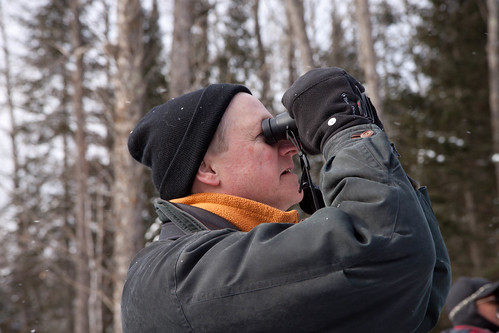 |
| If you see a birder, say, for example, my friend Chuck Hagner here, looking into the trees at the bog, pay attention. |
If the people are staying in their cars, you should, too. And never pull past them before you know what’s happening—it’s the height of rudeness for a birder to pull up between birders and the bird they’re looking at to ask what they’re seeing. It’s also rude to pull ahead of someone rather than behind if you’re going to take advantage of a bird that person found first. You can always pull behind, and then walk toward the people, keeping the cars between you and whichever side the bird is on, to find out what’s happening. If people are photographing, some of them might be recording a video, so be quiet and alert until you’re sure it’s okay to talk.
Birding the Sax-Zim Bog is one of my favorite things about winter. Whether I luck into a day like last Sunday, with lots of owls and photo ops, or whether the birds are few and far between, or whether I get skunked altogether, I always have a good time. There are few guarantees in the world of birds, but if you keep an open mind and an open heart, a February day in the Sax-Zim Bog may be frozen, but like ice cream, it’s guaranteed to be sweet.
